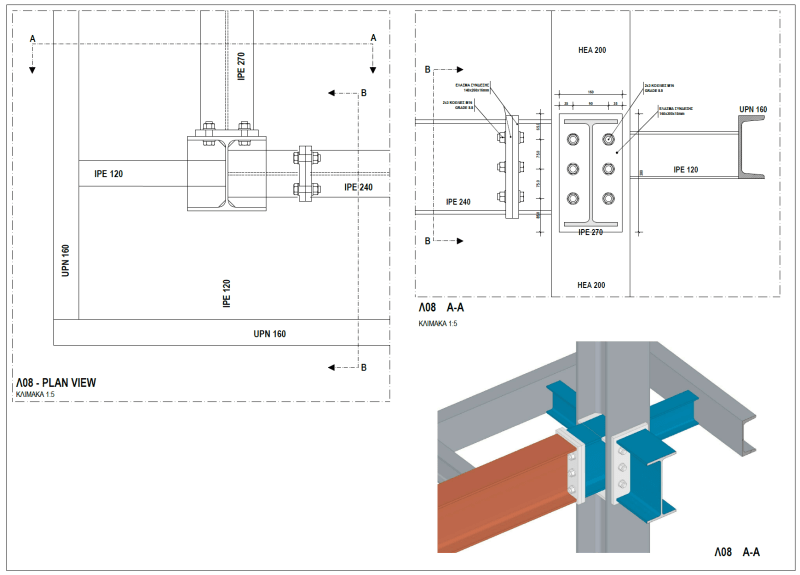kellez
Civil/Environmental
- Nov 5, 2011
- 276
Hi everyone, what I want to do here is to start a general discussion regarding steel frame connections, real life stiffness of connections, how do you choose to model them for analysis, how you choose a certain type of connection over another and why.
In order to start this topic, i am posting a model/photo of a simple connection. and my question is, what do you think about the connection of beam IPE270?
My thoughts are....for sure this is not a fully fixed connection but neither a fully pinned one. My thinking, is that it actually does, absorb some moment but the question is how much?
If we remove the 2x M16 bolts at the top and the 2x M16 bolts at the bottom and we only leave the 2x M16 bolts in the middle then for sure the connection will absorb less bending moments than the connection with all the 6x M16 bolts.
what do you guys think?

In order to start this topic, i am posting a model/photo of a simple connection. and my question is, what do you think about the connection of beam IPE270?
My thoughts are....for sure this is not a fully fixed connection but neither a fully pinned one. My thinking, is that it actually does, absorb some moment but the question is how much?
If we remove the 2x M16 bolts at the top and the 2x M16 bolts at the bottom and we only leave the 2x M16 bolts in the middle then for sure the connection will absorb less bending moments than the connection with all the 6x M16 bolts.
what do you guys think?


